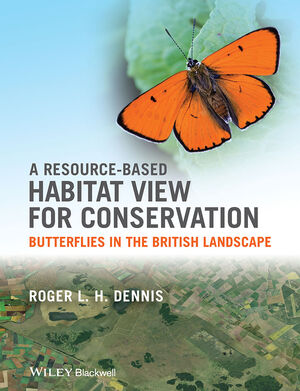A Resource-Based Habitat View for Conservation: Butterflies in the British LandscapeISBN: 978-1-4051-9945-2
Hardcover
420 pages
February 2010, Wiley-Blackwell
 |
||||||
"A series of interesting appendices on host plant and nectar plant resources and other utility resources and life history data on British butterflies will be a useful source of information to several researchers and students . . . I recommend this highly interesting and stimulating book to all conservation biologists, entomologists, and students in the field of conservation, entomology or general ecology. . . I see no reasons for not buying this book." (J Insect Conserv, 2010)
"This splendid book, lavishly produced and beautifully illustrated, is a ‘must have' publication not only for lepidopterologists, but also for any entomologist interested in insect ecology and conservation." (Fragmenta Entomologica, 2011)
"The author is a leading authority on butterflies, who has published both academic papers and books and this depth of knowledge is clearly evident in the book...The appendices alone are an achievement, useful to anyone who wants to quickly check larval hostplants, popular nectar sources or even the BAP status of species." (British Wildlife, January 2011)
"This ponderous book not only uses an enormous amount of literature data, but takes advantage from the life-span experience of the author...The entire book is splendidly illustrated. There are an extraordinary number of graphs (many original) and a good selection of beautiful photographs to illustrate biotopes and species. Printing quality is excellent. The price is fully justified and it is important to know that the author has offered to donate the royalties towards the work of Butterfly Conservation. The book should be essential reading for students and researchers in ecology and conservation, and those concerned with environmental management and assessment." (Biological Conservation, January 2011)
"Personally, I find this one of the most significant books published in my field over the last few years. I recommend this highly interesting and stimulating book to all conservation biologists, entomologists, and students in the field of conservation, entomology or general ecology." (British Wildlife , January 2011)
"[The] book should also inspire a wide range of people working on different taxonomic groups." (Journal of Insect Conservation, July 2010)



